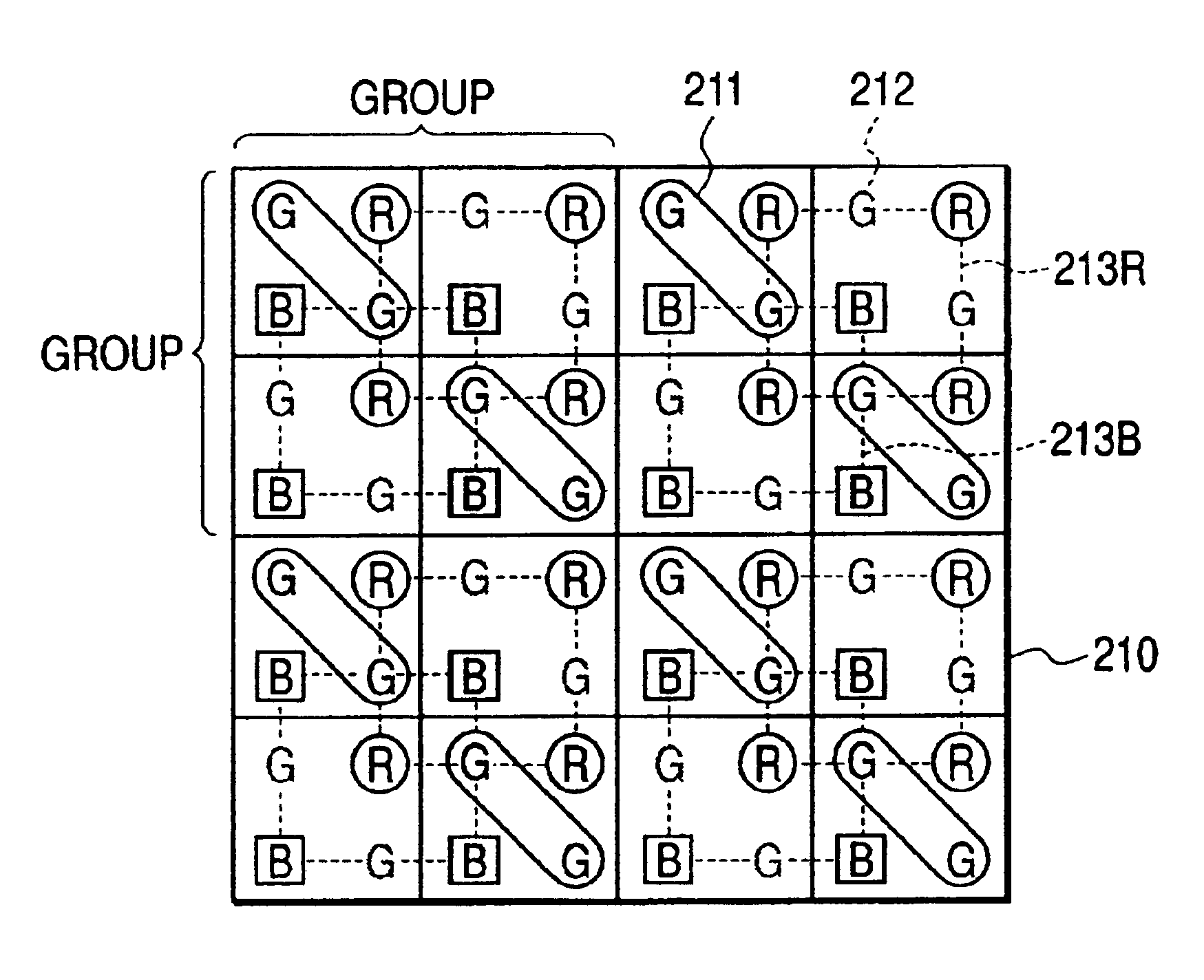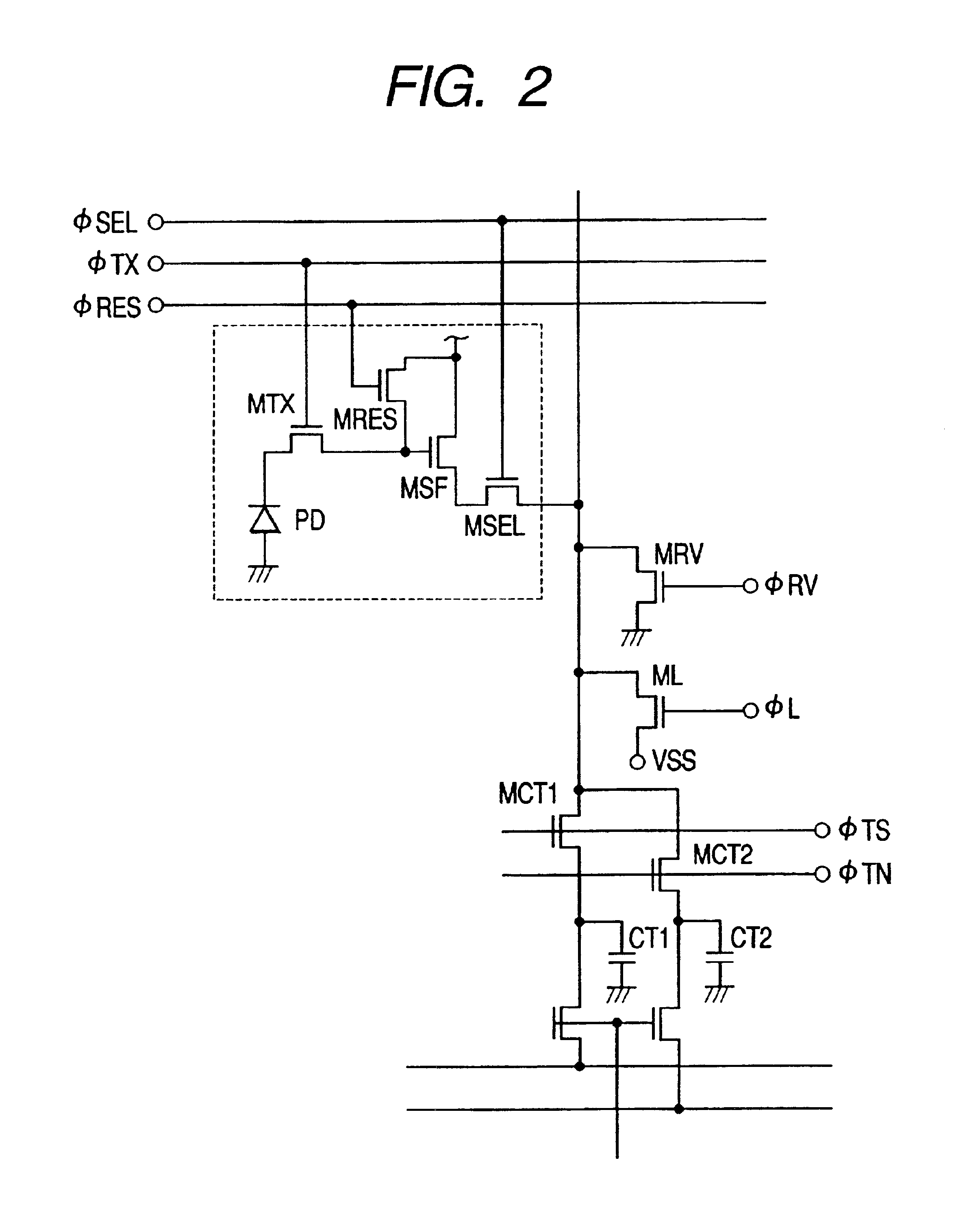Image pickup apparatus having plural pixels arranged two-dimensionally, and selective addition of different pixel color signals to control spatial color arrangement
a pickup apparatus and two-dimensional arrangement technology, applied in the field of image pickup apparatus, can solve the problems of signal degradation, increased device cost, and a large increase in power consumption, and achieve the effect of ensuring image quality
- Summary
- Abstract
- Description
- Claims
- Application Information
AI Technical Summary
Benefits of technology
Problems solved by technology
Method used
Image
Examples
first embodiment
[0097]A first embodiment will now be described.
[0098]FIG. 1 is a schematic diagram for explaining a pixel signal reading method employed by a color image pickup apparatus according to the first embodiment of the present invention. In FIG. 1, four channels are provided for the output of an image pickup device, and color filters of individual pixels that are arranged as a matrix form in the image pickup device, are arranged in a checkerboard: G (green) filters are arranged in half of the checkerboard pattern, and R (red) filters and B (blue) filters are each arranged in the other half of the remaining.
[0099]For high definition reading (system 1), each pixel signal is read individually. That is, pixel signals G11, G13, G15, . . . are output by a reading circuit 11 via output channel A; pixel signals G22, G24, G26, . . . are output by the reading circuit 11 via output channel B; pixel signals B21, B23, B25, . . . are output by a reading circuit 12 via output channel C; and pixel signals...
second embodiment
[0125]A second embodiment according to the present invention will now be described.
[0126]FIG. 7 is a schematic diagram for explaining a pixel signal reading method employed in a color image pickup apparatus according to the second embodiment of the present invention. In FIG. 7, four channels (four outputs) are provided for an image pickup device, and color filters for individual pixels that are arranged in a matrix form in the image pickup device, are arranged in a checkerboard: G (green) filters are arranged in half of the checkerboard pattern, and R (red) filters and B (blue) filters are each arranged in the other half of the checkerboard.
[0127]For high definition reading (system 1), all the pixel signals are read individually. That is, pixel signals G11, G13, G15, . . . are output by a reading circuit 111 via output channel A; pixel signals G22, G24, G26, . . . are output by the reading circuit 111 via output channel B; pixel signals B21, B23, B25, . . . are output by the reading...
third embodiment
[0156]A third embodiment according to the present invention will now be described.
[0157]FIGS. 14A and 14B are conceptual diagrams for an addition method according to this embodiment. In FIG. 14A, a general bayer arrangement 100 is the filter arrangement in which G is positioned, in a checkerboard, between R and B. The addition method of this embodiment will be explained by referring to FIG. 14A. In this example, a 2×2 pixel block, wherein G is positioned, in a checkerboard, between R and B, is regarded as one element that has a basic color structure, and four adjacent elements constitute one group. As for G, two pixcels adjacent to each other in an oblique direction in the element are added together. A block 211 denotes the G pixels to be added together. As for R and B, basically, only R and B pixels in the element are selected, and in this example, four pixels of the same color in the four adjacent elements (four pixels of the same color in one group) are added together. As a resul...
PUM
 Login to View More
Login to View More Abstract
Description
Claims
Application Information
 Login to View More
Login to View More - R&D
- Intellectual Property
- Life Sciences
- Materials
- Tech Scout
- Unparalleled Data Quality
- Higher Quality Content
- 60% Fewer Hallucinations
Browse by: Latest US Patents, China's latest patents, Technical Efficacy Thesaurus, Application Domain, Technology Topic, Popular Technical Reports.
© 2025 PatSnap. All rights reserved.Legal|Privacy policy|Modern Slavery Act Transparency Statement|Sitemap|About US| Contact US: help@patsnap.com



